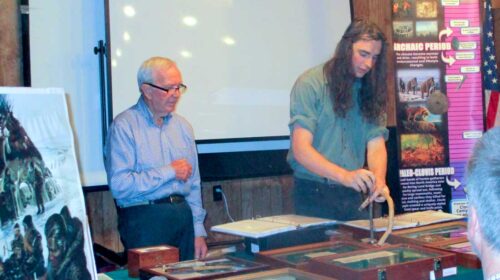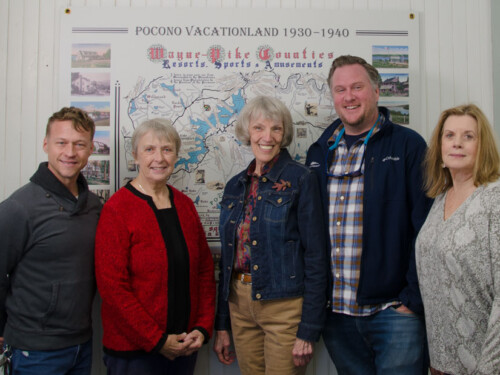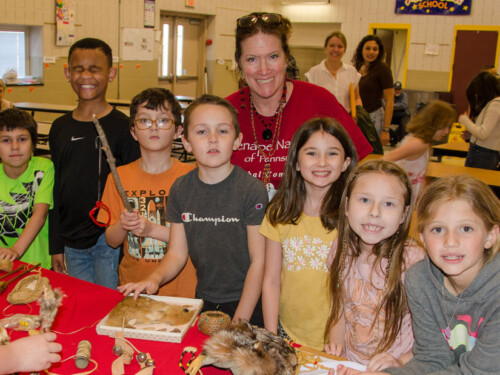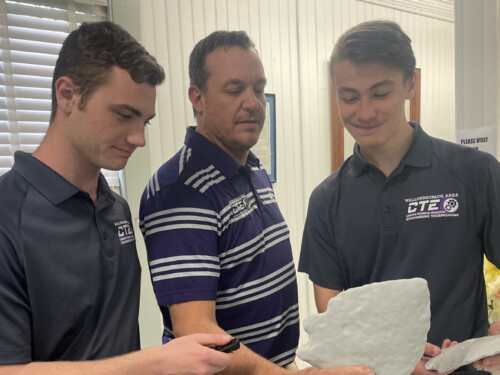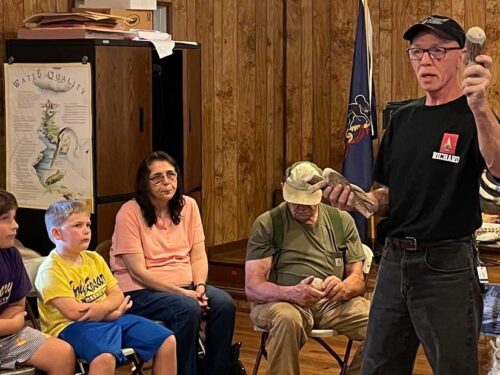Local historian Russell Cramer enthralled his audience at Promised Land State Park when he gave them a glimpse into the lives of the first people to live in the Poconos, arriving around 20,000 years ago. In a talk hosted by the Greene-Dreher Historical Society on June 12, Russ recounted how Native people adapted to the challenges of a changing climate over thousands of years. Using stone tools and artifacts gathered from sites along the Upper Delaware River, he illustrated how their technology evolved from the post-Ice Age Paleo Period when big game animals roamed the area, through the Archaic Period when the climate was more similar to today, up to the late Woodland Period prior the arrival of Europeans in the mid-17th century. The environmental conditions and food resources present during each of these three major archaeological periods represented different challenges to the Native people, and we can gain understanding of their lives and culture from examining the stone tools and artifacts they left behind.
Drawing upon the hundreds of indigenous artifacts on display, some dating back more than 12,000 years. Russ pointed out how Native people adapted their tools and weapons with amazing skill and precision in order to survive and create thriving riverine communities. The majority of the artifacts were from private collections and were gathered many years ago from plowed fields and sites along the Delaware River; however, archeological sites located within Delaware Water Gap National Recreation Area are not open to the public for surface artifact hunting.
Russell Cramer, a retired businessman and amateur archaeologist, grew up in Shawnee-on-Delaware in the 1950s and became interested in local history at a young age. “I grew up in Shawnee in the 1950’s and must admit that I knew the history of each and every house in the village. I was so enthralled with what happened there that I wrote my senior thesis at Gettysburg College on its long history.”
Russ has participated in excavations at the Shawnee-Minisink site conducted by archaeologist Donald Kline, who discovered the site in 1972. It is one of the most accurately dated Clovis sites in the East, providing a reliable date of nearly 11,000 years. Russ is a member of Indian Artifact Collectors North East (IACANE), a group dedicated to the preservation of Native American points and tools.
